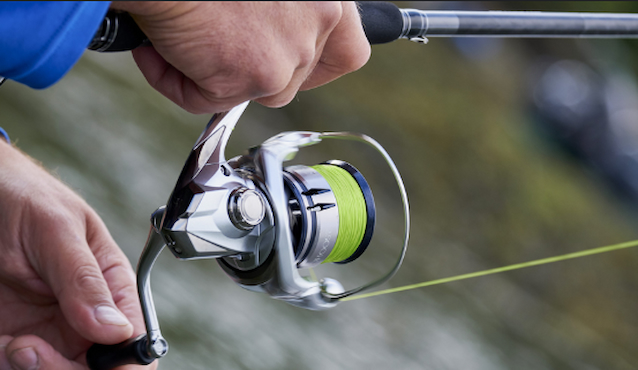Fishing Basics: 4 Important Shimano Accessories You Should Have
Do you pack the car for a quick morning by the water, then second-guess what you tossed in your tackle bag? You want gear that feels smooth, holds up to hard fights, and helps you put more fish on the line without fuss.
You can keep it simple and still fish like a pro. You’ll find that the range of Shimano fishing accessories covers the core pieces you reach for every trip, from a reliable reel to the right lure for local waters. Pick gear that matches your target species and the way you cast, set up a clean system you trust, and you’ll spend more time casting and less time sorting out problems.
What Shimano Fishing Accessories Do You Need?
Start with the basics that touch every cast and fight. Shimano fishing products shine when you match them to your style: the lure weight you throw, the line you prefer, and the fish you chase. The four categories below form a kit that works on lakes, rivers, and light surf without getting bulky or complicated.
Lures
Build a small, smart box that covers different depths and actions. Keep a few shallow and mid-depth crankbaits for steady retrieves along weed lines, a couple of slim minnow baits for twitching near the surface, and soft plastics on jigheads for the bottom. Vary weights from 7 g to 28 g so you can cast in calm bays and breezy points. Add one medium spoon around 18–24 g for long casts from shore; it cuts wind and throws flash on a straight retrieve. Carry naturals like perch and roach in clear water, then switch to chartreuse or firetiger in stained water to help fish track the lure.
Swap stock trebles for quality singles if your water rules need them, and use split ring pliers so you keep the lure’s action clean. Jigheads in 5–14 g cover most river pockets and drop-offs; pair them with 7–10 cm paddletails or worms. Round out the box with a topwater pencil for low-light bites and a small spinner for creeks. With this spread, you can adjust in minutes when fish slide deeper, push shallow, or key on smaller bait.
Reels

A good reel gives you distance, control, and calm drag under pressure. Choose a spinning reel in the 2500–3000 size for all-around freshwater use. That size balances well on 2.1–2.4 m rods and holds 150–200 m of 0.18–0.25 mm mono or 0.10–0.15 mm braid. Look for a smooth front drag that starts without a jerk, plus a rigid rotor and body so gears stay aligned when a fish surges. A spool with a clean lip lets line fly with less friction, which adds real meters to each cast.
Ratios around 5.0–6.2:1 handle cranks, spoons, and jigs without feeling slow or rushed. Check the handle knob shape; a round or slightly oval knob gives grip with wet hands. Keep the weight in mind too: 220–250 g feels light all day and keeps your wrist fresh during long sessions. After fishing salt or gritty banks, rinse with fresh water, dry, and add a drop of oil to the line roller and handle joint. Back off the drag between trips to protect the washers. Do this simple care and your reel will feel smooth season after season.
Rods
Your rod sets the tone for casting accuracy and bite detection. Pick length and power to match your water and lure range. A 2.1–2.4 m spinning rod covers bank fishing on rivers and lakes, giving you reach for line control and leverage to steer fish from cover. Medium-light to medium power with a fast action works for 7–28 g lures, which covers most crankbaits, spoons, and jigheads. Look for a blank that recovers quickly so casts remain straight and don’t wobble.
Guides should handle the braid without groaning on the haul; slim SIC or similar inserts do well. A split-grip EVA or cork handle trims weight and keeps your hand close to the blank for better feel. Before you buy, mount your reel and check the balance point: you want the setup to sit neutral near the front grip so your forearm doesn’t tire after 200 casts.
Fish tight creeks or overgrown banks? Drop to 1.8–2.1 m for accuracy under branches. Work open banks or light surf? Go 2.7 m to gain distance and faster line pickup on long drifts. If you chase pike, step up to a medium-heavy power for 15–40 g lures so you drive bigger hooks without strain.
Rod And Reel Combos
A matched combo removes guesswork and gets you fishing faster. The benefit shows up on cast one: the rod loads into the reel’s sweet spot, the line leaves the spool in clean coils, and the lure lands where you aimed without loops. Look for combos rated 7–28 g if you throw cranks, spoons, and soft plastics for perch, bass, trout, or light pike.
A medium or medium-light blank with a fast tip gives you bite detection plus backbone for solid hooksets. Pair the rod with a 2500–3000 reel, then spool 150 m of 0.12–0.14 mm braid and add a 60–80 cm fluorocarbon leader in 0.25–0.35 mm for clear water. If you fish snaggy rivers, switch to a short 30–40 cm leader to reduce break-offs at the knot. Test the combo in the shop if you can: shake the tip, check that the guides line up true, and make sure the handle length feels right for your cast style.
A good combo keeps costs sensible and balance dialled, so you can put more of your budget into a tight lure spread, quality snaps, and spare leaders. Over a full season, that simple, well-matched setup saves time, catches more fish, and keeps your kit lean enough to carry on foot.



